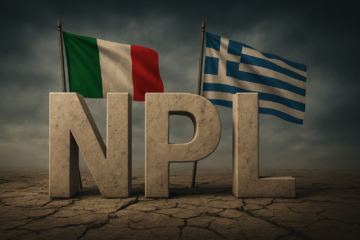HP; market cap (as of 10/10/2014): $62.52bn
On October 6, 2014 the Hewlett-Packard Company (HP) released its plans to split by end of October 2015 into two potentially Fortune 50 companies: business-oriented HP Enterprise and personal systems-oriented HP Inc. The split is intended to be tax-free for the current shareholders who as a result will hold shares in both companies.
The stock jumped 4.7% to $36.87 on the day of the announcement but since then drifted down to $33.50. Meg Whitman, the current CEO and future CEO of HP Enterprise announced that the separation “will provide each new company with the independence, focus, financial resources, and flexibility they need to adapt quickly to market and customer dynamics”. Indeed, this move comes in place considering shifting dynamics of technology industry into mobile devices and cloud computing where Apple, Google, and Amazon pose strong competition.
HP is one of the behemoths of current tech industry. Started in 1930’s by two Stanford university graduates, Bill Hewlett and Dave Packard, to make electric equipment in a Palo Alto garage it has been commonly attributed the birth of the Silicon Valley. In Q3 this year, HP ended in second consecutive year of falling profits for its PC division shipments, a worse situation compared to also struggling Dell and Lenovo. The idea of splitting the company lingered since 2011, but the management clung to the idea that a larger company, which indeed is one of the largest buyers of semiconductors, had a price negotiation advantage.
From a strategic perspective, the separation wants to enhance the focus of the companies: HP Enterprise will inherit the ever-important cloud solutions while HP Inc. the hyped 3D printing business. Moreover, the strategy aims heavily on financial optimization of the separated companies and continuing on the strategic job cuts (now bumped up to 55,000).
The separation will result in two companies that evenly split 2013 revenues of $112bn (see chart below). Ms. Whitman, the HP Enterprise CEO will also take a place on the Board of HP Inc. while Dien Weisler, the current head of HP printing business will be the role of HP Inc. CEO.
Last time HP separated a part of its business was in 1999 when it spun-off Agilent, its measurement equipment unit, in the wake of dotcom boom. Management wanted a leaner company to be moving fast in the changing world. The move was met with enthusiasm but since then Agilent did not increase its market cap from its first day value.
Soon after its success in being the appointed for the PayPal spin-off, Goldman Sachs was selected as financial advisor.
Separation as a wider trend
HP’s initiative to split its businesses into parts is not a singular event. Management is increasingly under pressure from investors to split up large corporations into smaller parts. The underlying logic being that is that a more focused firm will be able to better manage its strategy and would not be able to hide its successes or failures from shareholders behind the cushion of alternate firm activities.
As such, many large hedge funds and institutional investors have been active in advocating spin-offs, such as Icahn who has pushed for eBay’s split, and Ackman who convinced Fortune Brands to split into three. According to Dealogic this year has witnessed 59 spin-offs with a combined value of $98bn – up 85% from last year.
Despite the frenzy of activity, it is not always the case that such maneuvers create value to the shareholders. Despite an initial bump in combined capitalization, these gains rarely seem to persist nor does the splitting up of businesses translate to increased economic success for the firms.
Nevertheless, it seems that the investment banks themselves are some of the most prone to this type of activist investor lobbying and pressure. In this regard, another valid explanation for this overarching trend is the general situation investment banks find themselves in. With declining volumes of takeovers, they have pushed for firms to separate their core activities in a bid to push up total deal volume. Blackstone announced this Friday (October 10) the spin-off of its advisory division due to being hampered by potential conflicts of interests while combined with the private equity line. Moreover, Morgan Stanley stands at 0.55x book value and Bank of America Merrill Lynch at even less – approximately a third of book value. This makes them likely targets for activists, especially at a time when their stock prices are depressed. Other banks and firms under pressure to do the same include UBS, Credit Suisse, GE capital.
[edmc id=1975]Download as PDF[/edmc]



0 Comments